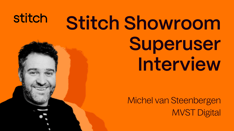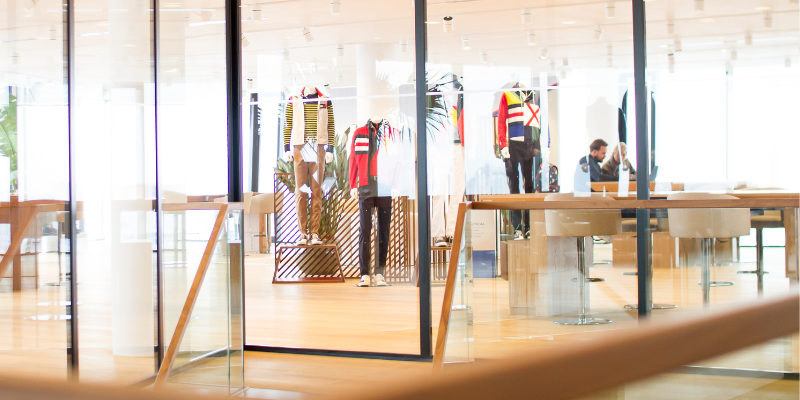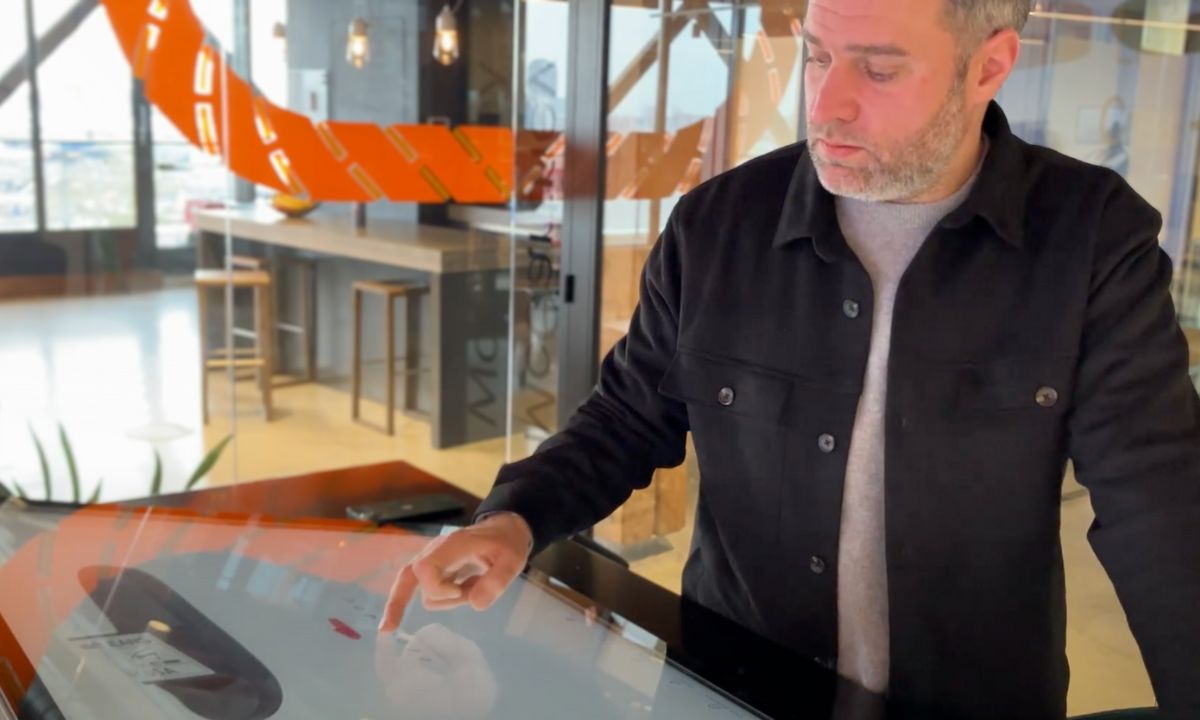When is the best time to optimize sales processes? Is there a right time to do it? According to Tahnee Schlachter, Director of Digital Wholesale at PVH, the right time was yesterday. This means that you should already be future-proofing your sales operations.
We had the opportunity to talk to Tahnee about her and her team's journey into digital transformation in the wholesale business, its impact on the sales force and customers, and the benefits - even the unforeseen ones. Tahnee concluded with a crucial piece of advice for brands considering the transformation path: "Start now, don't wait.”
 Do you prefer a video version of the interview?
Do you prefer a video version of the interview?
Watch the recorded video on our Youtube channel.
Over the past decade, Tahnee's team at PVH has been creating compelling selling and buying experiences, fostering brand loyalty, and driving bottom-line results with the digital showroom. The focus has predominantly been on wholesale, with a goal of driving more omni-channel in that space. This journey started back in 2015, and now PVH has a full selling suite rolled out across the globe, in 45+ locations.
Learn from Tahnee what a digital selling strategy requires and why NOW is the moment to start.
Interview Key Insights:
1. Visionary Approach to Transformation: At the heart of PVH's successful journey into digital selling was a forward-thinking vision. This visionary mindset, driven by the goal of future-proofing the organization, laid the foundation for PVH's digital showroom, leading to impressive global adoption across their brand locations.
2. Importance of Change Agents: Tahnee highlighted the role of collaboration, change agents, and understanding customer needs as pivotal factors in PVH's digital success. By involving individuals with digital expertise in various markets as change agents, they ensured a smooth transition for buyers with varying levels of comfort with technology.
3. Agility and Readiness for the Future: The implementation of the digital showroom not only streamlined PVH's selling process but also positioned the brand for unforeseen challenges, such as the COVID-19 pandemic. Tahnee noted that the years of digital transformation prepared the organization to navigate the crisis effectively, showcasing the importance of being agile and ready to adapt to changing circumstances.
Stitch: What motivated Tommy Hilfiger and Calvin Klein to begin digitizing their sales processes? How did the digital showroom start?
Tahnee Schlachter: The idea for the digital showroom was born out of a vision to future-proof ourselves a decade ago. Our organization relied heavily on wholesale, which had both benefits and inefficiencies. We realized we could do better and embarked on a transformation journey that involved the entire company.
In the beginning, our goal was to determine what our sales force needed to improve their sales, as well as what our customers required to sell in their stores. We wanted to understand what was necessary for them to truly comprehend the storytelling and the collection, and to build the trust and understanding necessary to make digital purchases.
It was a combination of innovative mindset and looking at inefficiencies, seeing how we could solve that. All of it driven by an entrepreneurial spirit that got us where we are today with the digital showroom.
Stitch: What was the main challenge in future-proofing your team?
TS: The biggest problem was change, and change is hard. Change management should not be underestimated, and transformation is crucial. Support for transformation needs to come from management and must be continually monitored. If that is managed properly, everything else will fall into place.
Stitch: When implementing the digital showroom, what did you consider to be your most important assets?
Tr: It's the entrepreneurial mindset and the drive to optimize things. A decade after implementing it, we're continuously working towards enhancing things, while also driving waste reduction. We are pushing our sustainability efforts, where digital can play a huge part in diminishing our footprint. That has been the biggest asset of this organization, along with the openness to change.
And to make this happen, we rely on our change agents. Together with the team, we identified change agents in all markets, and they are essential for aligning the regions with the bigger picture. You need their support to drive the transformation and strategy forward. This is the secret sauce to the success of the digital showroom.
Stitch: Can you tell us more about who the change agents are?
TS: We refer as change agents those people in our sales force that masters the digital showroom and have the digital mindset. They understand how to come up with solutions or connect with the right people to help resolve any issues in a timely manner. They become part of our super user group, and we constantly involve them in the next steps of product development and inform them of new features. We take their needs into consideration because they understand sales and what is required on their markets, as well as what customers need in that particular situation. They become our strongest allies, spreading knowledge across the globe and helping with continuous transformation.
Stitch: How did buyers transition from the traditional to the digital showroom?
TS: We phased in the approach for the very traditional type of buyers and communicated that we were going to go digital. We combined appointments using physical samples and digital content, and listened to them to see how the transition was going. This helped customers understand they were starting this trajectory with us and gave them time to adapt.
However, some buyers were more resistant. They still wanted to touch the physical sample and feel the fabric in order to decide what to buy. But in the end, our biggest critics became our strongest advocates as they started using the digital tools. They found it intuitive and time-saving, enjoying the simplicity, oversight, and all the benefits that it brought. They recognized why we were moving in this direction. That's why it's important to have an approach that is tailored to each customer.
Stitch: How did brand storytelling change for PVH brands after implementing digital showrooms?
TS: It has changed so much. With the ability to tell a cohesive story globally, there has been a greater focus on storytelling in every collection, which is a huge focus for PVH brands. The digital showroom allows us to bring that story to the forefront of the sales presentation and ensure that the product takes center stage. The approach is aligned across regions, so what we sell in Amsterdam is presented similarly to what we sell in Mexico and how we present it on the shop floors. It has a huge benefit, and we hear it from our customers, so it has been quite significant.
Stitch: Were there any unforeseen benefits that you didn't anticipate at the beginning?
TS: 100% yes. The most obvious benefit is that it made us digitally ready for a time that we didn't even consider was coming: the pandemic. When the unexpected happened three years ago, we already had years of digital transformation that we could rely on, from a sales point of view. But also from the discipline that we brought operationally on how we digitize assets, how we distribute them globally, and how we run our sales season. All of that experience made us ready for those difficult times and will continue to help us be future-proof when it comes to selling and buying.
Stitch: What was your biggest learning during the digital showroom implementation journey?
TS: I believe that the way we embarked on this journey and collaborated to really understand everyone's needs, along with the attention we brought to this change, was very well managed. We created a sensitive ecosystem, and it is important to keep this in mind: how do you blend the tech and the product experience to ensure they are well connected? It is the only way to guarantee a stable, reliable, and performant environment. That's the biggest lesson: to keep in the back of our minds that collaboration is key for the product to be successful, especially if you're going to scale at large. Those are absolutely the fundamentals.
Stitch: If a brand is implementing a digital showroom now, what would you advise?
TS: My advice is to really listen to your audience and learn from other brands. It can be overwhelming to think about all the things that need to be tackled to go down this trajectory, but starting is the most important thing. Considering where we started and where we are today, implementing digital selling has now become part of our DNA at PVH. But you need to start.
Collaboration is the key focus on this journey. You need to have everyone involved from the get-go to ensure that people can keep working with you towards this aim and trajectory.
And don't forget about the experts. There's specific expertise required in building a successful tool and ensuring that your user or customer is always number one. This will help you create a successful and likable product. You don't need to reinvent the wheel, there's just so much out there already available. Just tap into the experts, have a conversation with Stitch. That's my biggest advice.
Stitch: So, when is the right time to shift towards digital selling?
TS: If you ask me, the right time was yesterday. Everything is heading in that direction, towards digital transformation. As a consumer who only shops online, I appreciate the simplicity and time-saving benefits that digital shopping brings. It would be foolish to ignore the digital audience and the ongoing transformation and changes happening in various industries.
It would be unwise for any organization not to embark on this journey. Change needs to happen quickly. If your organization is not yet on board, it's important to listen to your audience and find ways to make that transition faster, as it is the way forward.
 Watch more experts interviews on the Stitch Youtube channel.
Watch more experts interviews on the Stitch Youtube channel.







